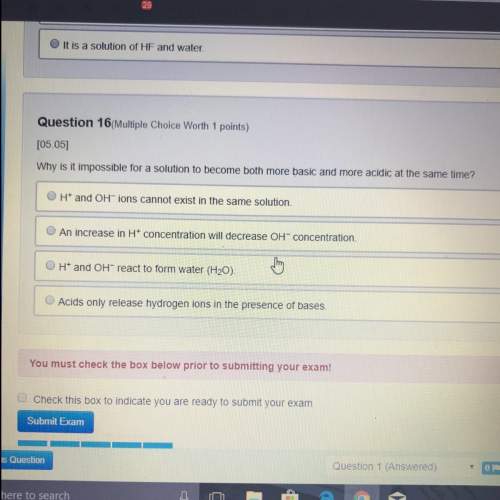
Chemistry, 22.02.2021 21:30 moneymaleia9264
When writing chemical equations, the coefficient is distributed to each element in the (1) not just the first element. The coefficient also goes in front of the entire compound. If a subscript is located within the compound, the subscript is (2) by the coefficient to determine the number of atoms of that element. Examine the formula: N2 + H2 ⇒ NH3. When balancing this equation, the reactant side has (3) nitrogen atoms, while the product side has (4) nitrogen atom. To balance the nitrogen atoms, a coefficient of 2 is placed in front of the compound (5) . The number of hydrogen atoms in the product is now equal to 2x3, or the coefficient times the (6) . The hydrogen atoms on the reactant and product sides are not (7) . To balance them, a (8) must be placed in front of the H2. Now the equation is balanced.
Options:
(1) - Balanced, Compound, Subscript
(2) - Subscript, Balanced, Compound, Multiplied
(3) - 2, 1, 3, N2
(4) - 3, H2, 2, 1
(5) - N2, NH3, H2, 2
(6) - Subscript, Compound, Balanced, Multiplied
(7) - Subscript, Compound, Balanced, Multiplied
(8) - 2, 1, H2, 3

Answers: 2


Another question on Chemistry

Chemistry, 21.06.2019 21:00
Which statement describes evidence of a chemical reaction? a) ice melting eliminate b) water boiling c) lighting a match d) grape juice freezing
Answers: 3

Chemistry, 22.06.2019 04:40
Silver tarnishes as silver metal reacts with hydrogen sulfide, h2s, in the air. in this reaction, dark silver sulfide, au2s, covers the surface of silver. when silver is polished, this coating of silver sulfide can be removed from the surface. this makes the silver shiny again. enter the coefficients that balance the tarnishing reaction equation. (type 1 for no coefficient.)
Answers: 2

Chemistry, 22.06.2019 16:30
At 20°c, a sample of h2o liquid and a sample of co2 gas each have the same average kinetic energy. why is one a liquid and the other a gas at this temperature?
Answers: 1

Chemistry, 22.06.2019 17:00
In a heat engine of 1000 j of heat enters the system and the piston does 500 j of work what is the final internal energy of the system if the inital energy was 2000 j we have to do all of these down here 1)write the equation 2)list out your know variables 3)plug the numbers into the equations 4)solve 5)write your solution statemtn that includes inital energuy and final energuy added
Answers: 1
You know the right answer?
When writing chemical equations, the coefficient is distributed to each element in the (1) not just...
Questions

English, 03.10.2019 03:30


Computers and Technology, 03.10.2019 03:30





Health, 03.10.2019 03:30


Mathematics, 03.10.2019 03:30


Biology, 03.10.2019 03:30

English, 03.10.2019 03:30


Chemistry, 03.10.2019 03:30



Social Studies, 03.10.2019 03:30


Social Studies, 03.10.2019 03:30




